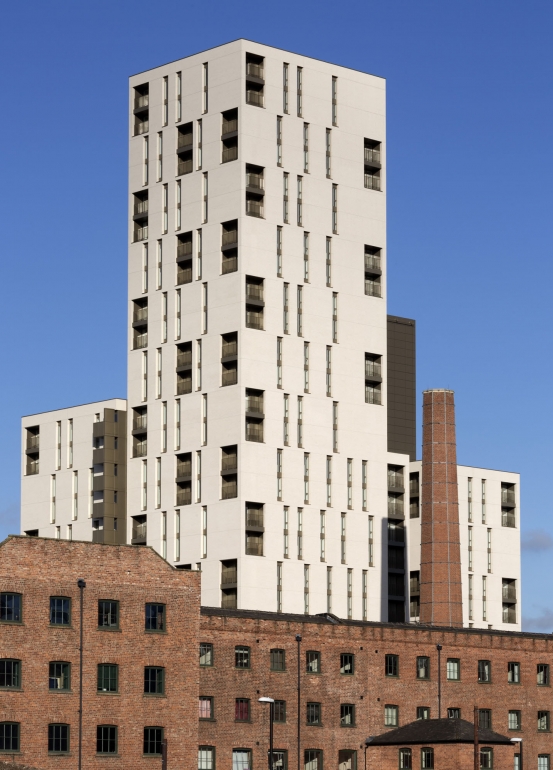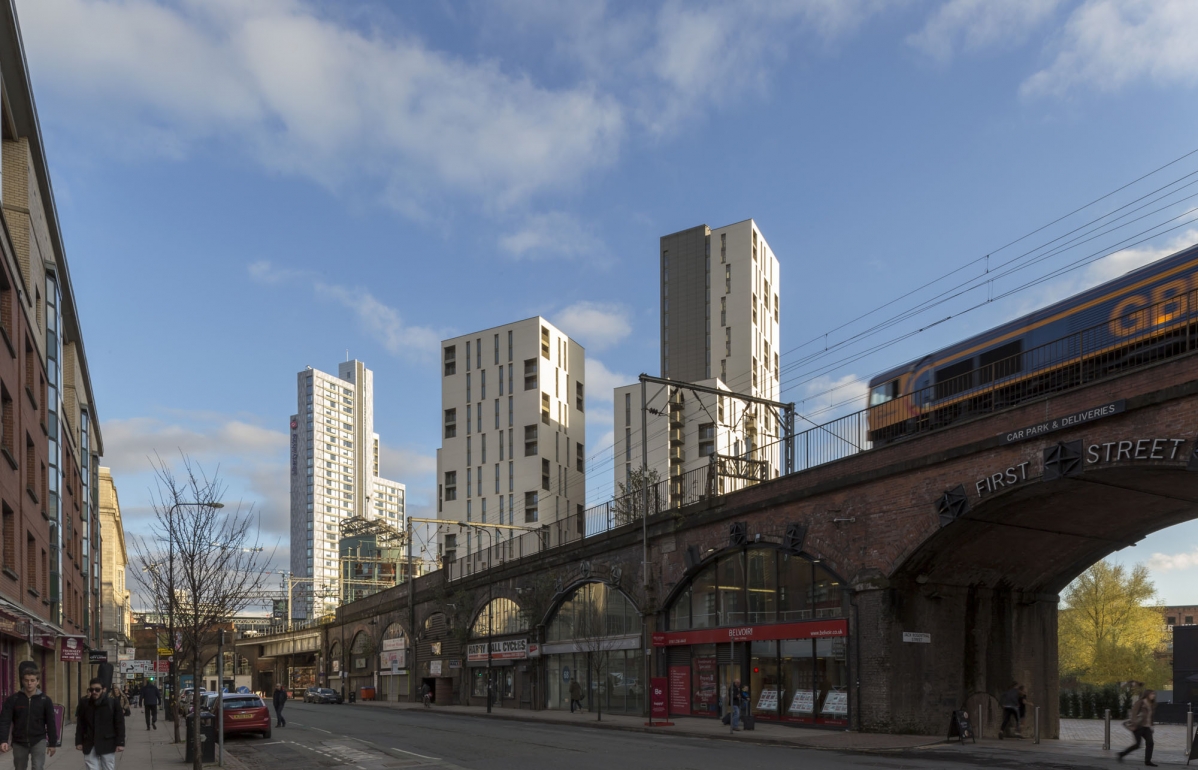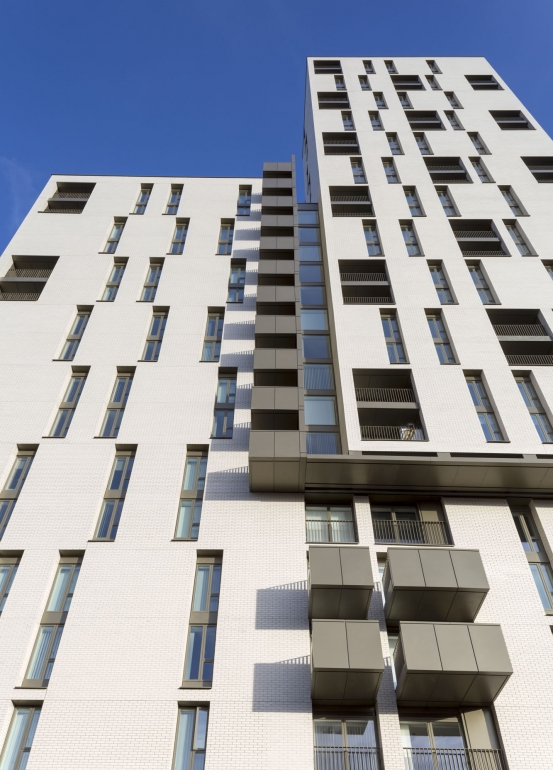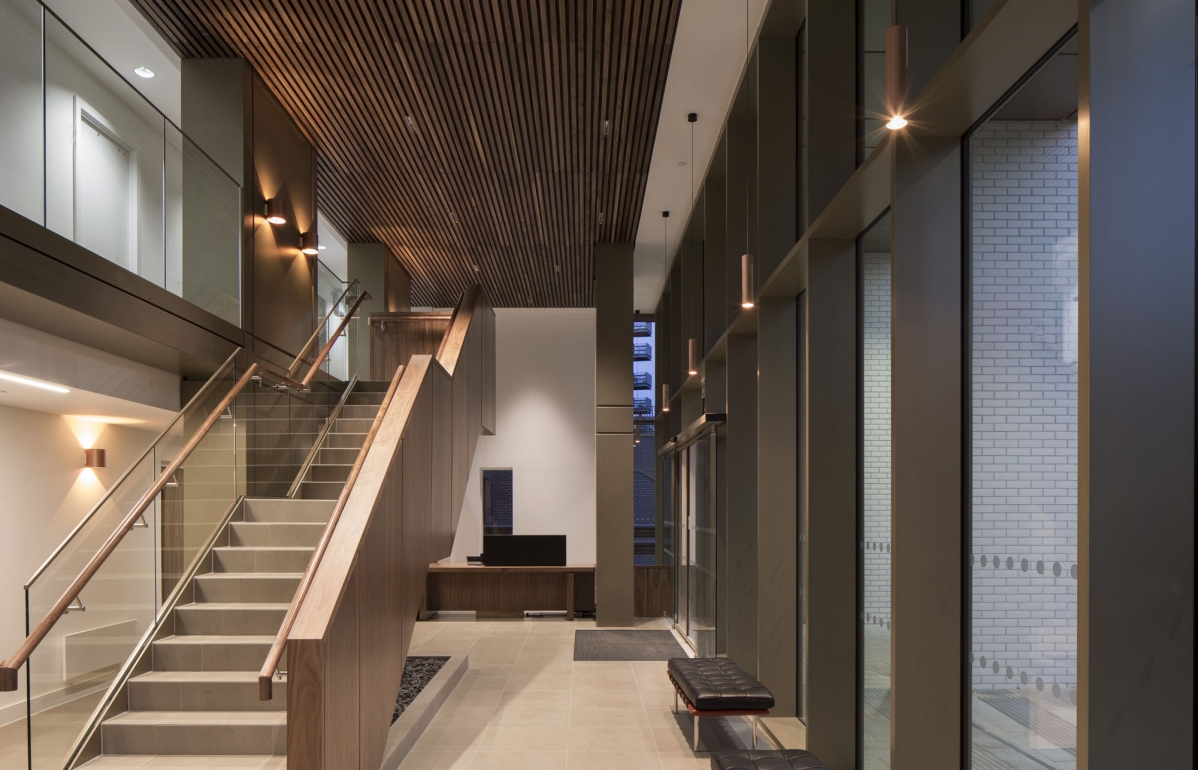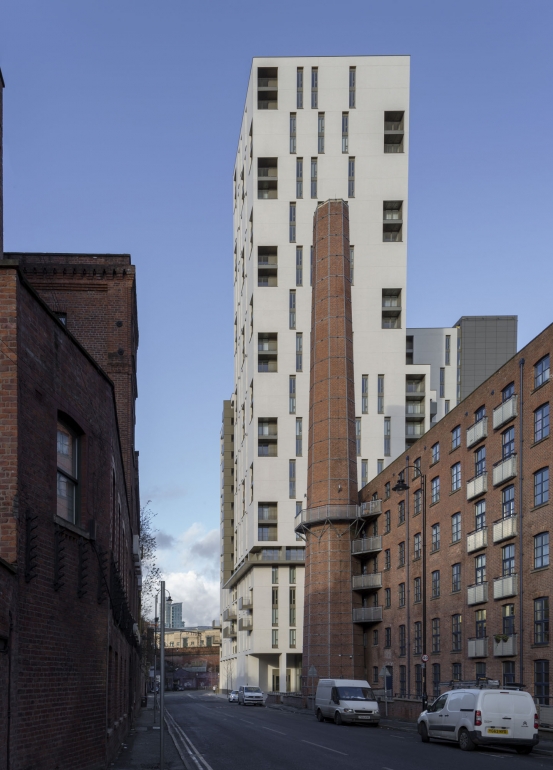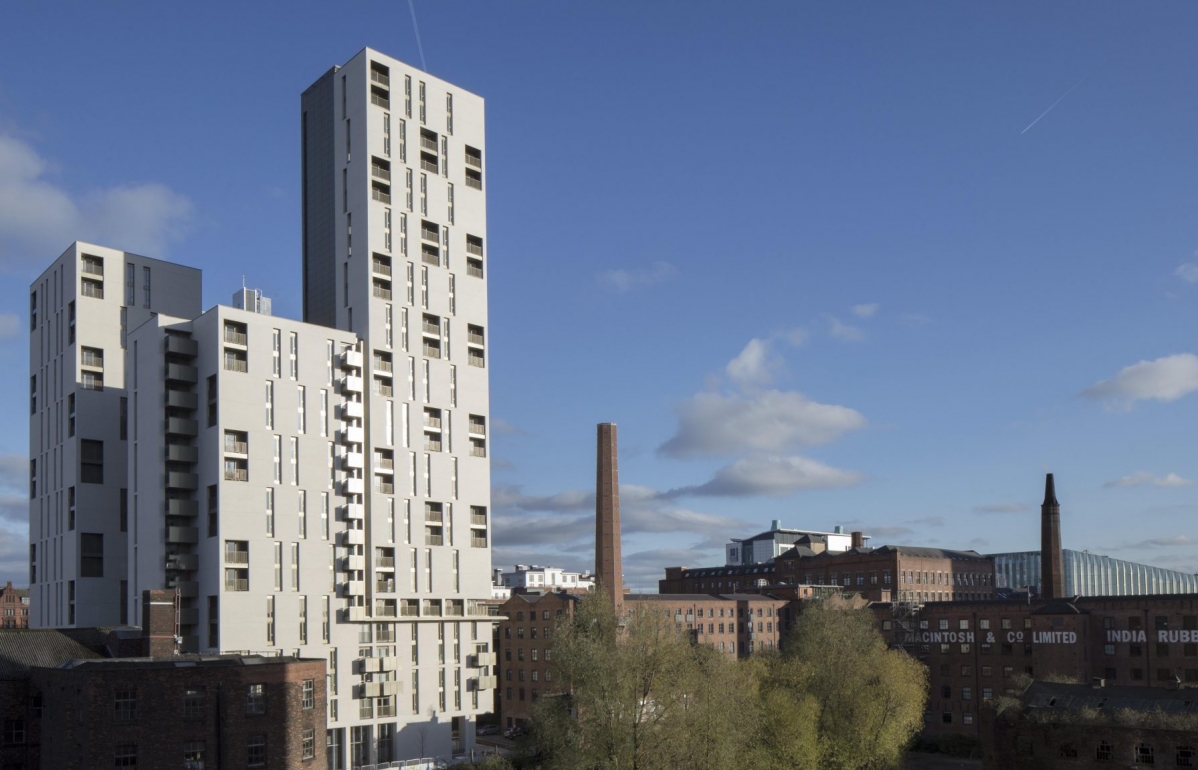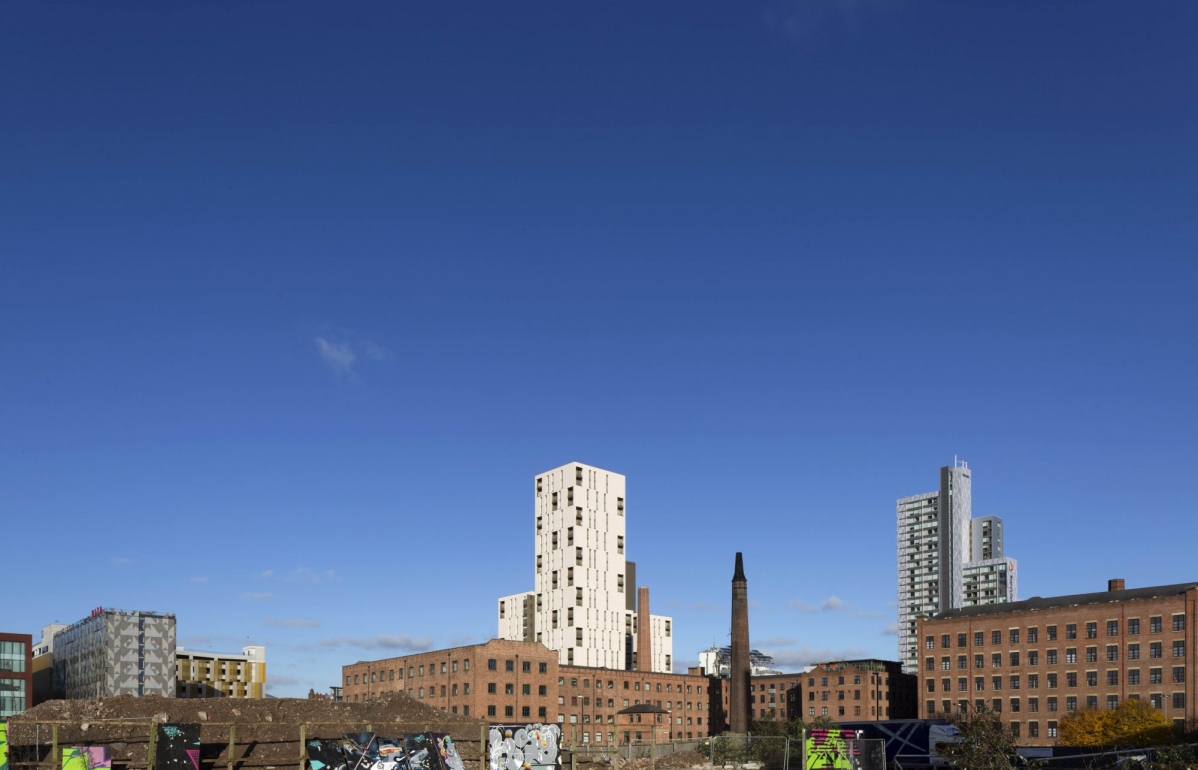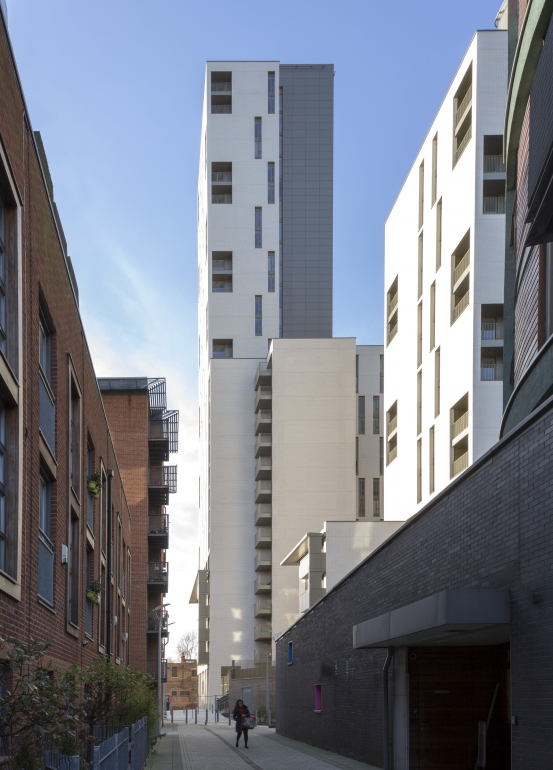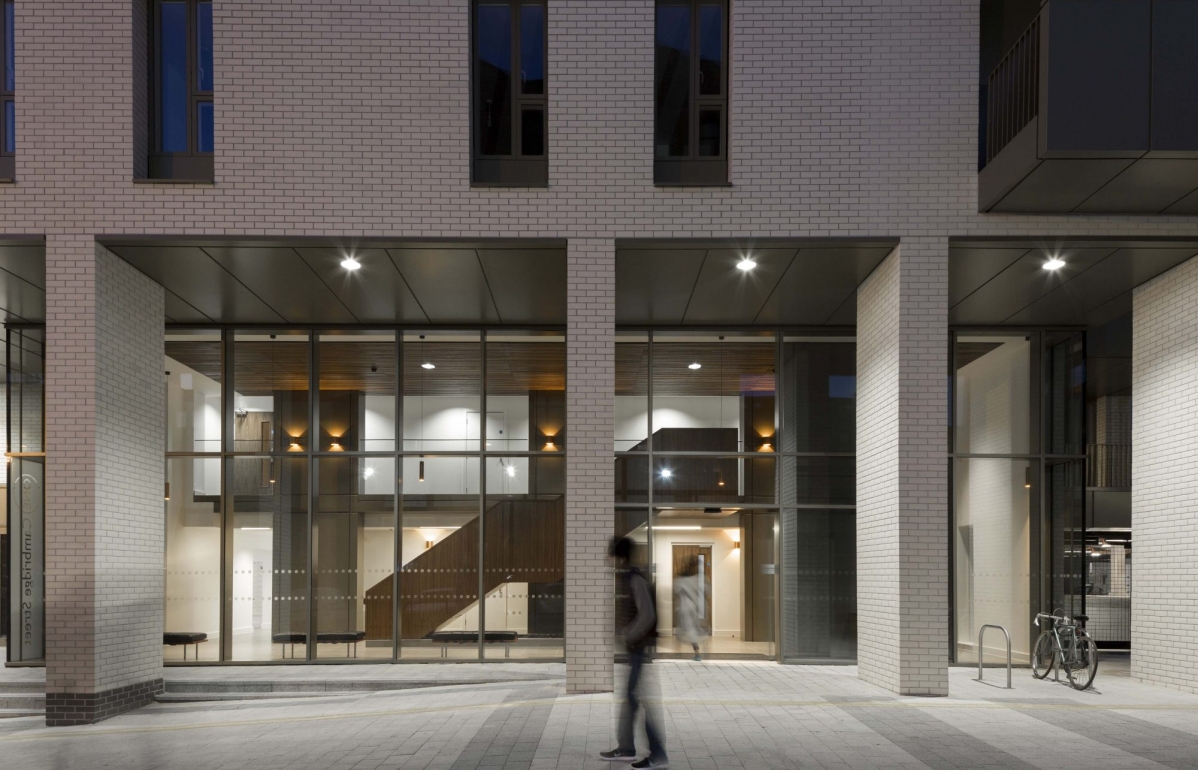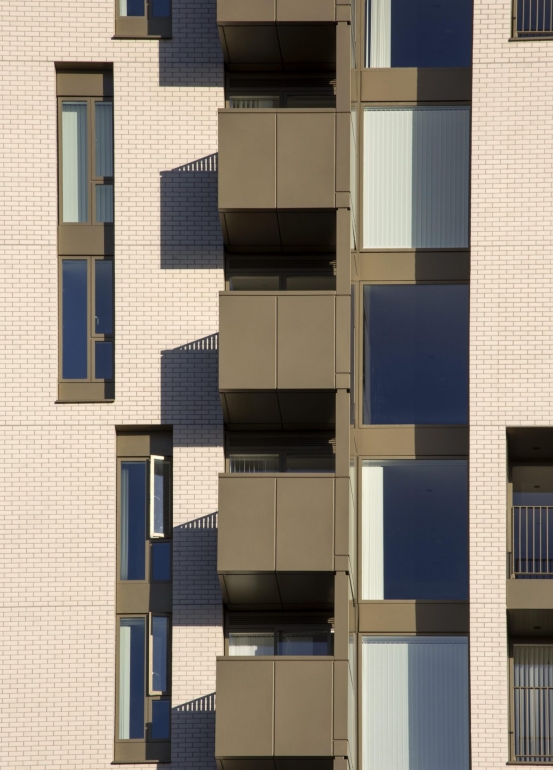The building site was a derelict horseshoe shaped plot, enclosed by a meander in the River Medlock to the Northern and Eastern boundary. The building contains 282 PRS apartments, with a reception and a commercial unit at street level. A split level car park is located on the ground floor and steps down internally to the existing site level.
The accommodation is split into two opposing blocks; the lower situated at nineteen storeys above ground and the highest at twenty eight above ground. The ‘negative space’ between the adjacent Grade II listed Chorlton Mill and recent apartment building to the east seeks to extend visually into the courtyard between the two blocks. The scale of each responds to the desire for the site to act as a landmarked gateway into the city, as defined by the Terry Farrell masterplan, whilst translating the key heights of the chimney and eaves of the adjacent mill.
The building utilises an in situ concrete frame with a lightweight structural framing system (SFS) external wall infill supported off the concrete slab edge. The facades are clad in a Corium brick tile cladding system fixed back to the SFS studs. White brick was selected in response to one aspect of Manchester’s urban structure where notable buildings are in Portland stone, and also as a backdrop to Chorlton Mill’s chimney. Cores are clad in an aluminium composite panel rainscreen system.
The one, two and three bedroom apartments were designed to the London Housing Design Guide standards.
The building provides high quality, high density accommodation for sustainable city centre living close to workplaces. All entrances incorporate level access from street, directly into the new public realm landscaping, which forms a new pedestrian link along River Street, enhancing local urban connectivity.
‘The essential quality Hodder’s in-situ concrete-framed architecture is concentrated in the way it has been skilfully demassed in plan and verticality, and in the details and modelling of external surfaces.’
Jay Merrick,
The Architects’ Journal
13 April 2017
